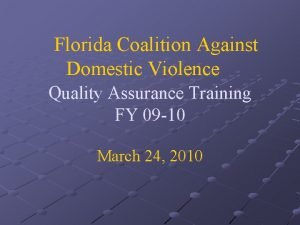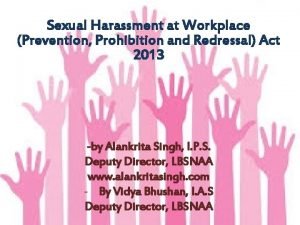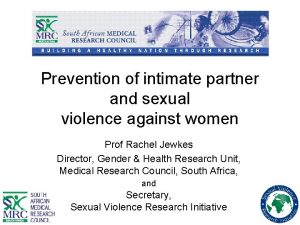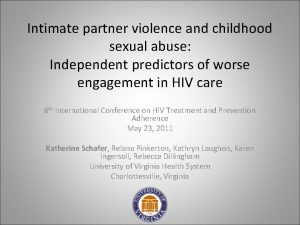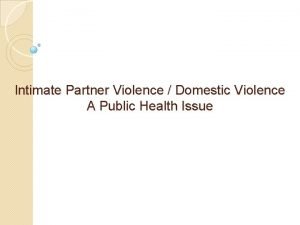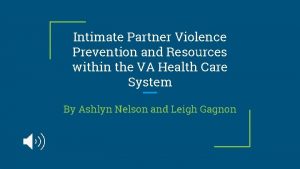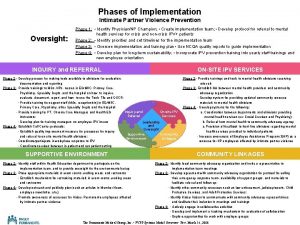Prevention of intimate partner and sexual violence against













- Slides: 13

Prevention of intimate partner and sexual violence against women Prof Rachel Jewkes Director, Gender & Health Research Unit, Medical Research Council, South Africa, and Secretary, Sexual Violence Research Initiative

Prevalence of victimisation: • Most research globally on GBV has focused on victimisation, notably the WHO multi-country study found: – 15 - 71% experienced physical or sexual intimate partner violence (IPV) – 0. 3 - 11. 5% experienced sexual violence by a nonpartner when > 15 years • Rape perpetration research is largely from South Africa and N America, but important work in is progress in Asia Pacific region

Community-based randomly selected sample of adult men and women in Gauteng Province South Africa

Sexual and intimate partner violence have a huge impact on social development and health impact • Women exposed have a very high prevalence of mental health problems – especially depression, anxiety, PTSD and substance abuse • Research increasing shows that many of the major development problems facing a country like South Africa are aggravated by IPV and rape, including teenage pregnancy, school completion, economic empowerment, crime and violence

Prevention is essential • Primary prevention – prevention of any occurrence • Secondary prevention - Responses to assist victim/ survivors of rape/sexual violence and IPV • These two need to be understood as dynamically interconnected – the response of a society to survivors and pursuit of justice for them send powerful messages about social morality • So what underlies the problems of rape and IPV?





Rape prevention: interpreting research findings, understanding context • Local knowledge is essential – Understand the context in which rape occurs – Understand confounding • Need theoretical models that draw on understandings from a range of disciplines • Rape prevention has to include addressing the context in which rape is often perpetrated (social or environmental) as well as addressing distal factors

Intimate partner violence prevention • Important to recognise the multiple overlaps between rape and IPV • Key areas of difference: – Relationship factors – conflict, poor communication, compounded by alcohol abuse – Women’s consent to subordination which contributes to their risk

So what must we do? • Intervention must address all levels – societal, community, family and individual • Interventions with a sound theoretical basis from which one can realistically anticipate impact on behaviour change • Need to combine actions: – – those aimed at reducing perpetration those protecting victims responses for victims those aimed at removing impunity • Need a long term view of change

Intervention focus: • Strengthening the home context of childhood – starting from birth (or before) • Transformation of the practices of gender relations, thus working to reduce violence and improve relationship skills • Interventions currently proven effective include school-based programmes, out of school interventions that focus on skills-building and are gender transformative (Stepping Stones), +/economic empowerment for women • Need to recognise that the current research base of intervention evaluations is very limited but includes evidence of what does not work!
 Periwinkle doerfler
Periwinkle doerfler Primary prevention secondary prevention tertiary prevention
Primary prevention secondary prevention tertiary prevention Florida coalition against domestic violence
Florida coalition against domestic violence Physical violence against women
Physical violence against women Alankrita singh ips
Alankrita singh ips Family of orientation
Family of orientation Define the relationship ch 7
Define the relationship ch 7 Define the relationship chap 7
Define the relationship chap 7 Intimate distance definition
Intimate distance definition Intimate family chapter 6
Intimate family chapter 6 Intimate family chapter 6
Intimate family chapter 6 Meaning of initmacy
Meaning of initmacy Intimate family chapter 2
Intimate family chapter 2 Register language
Register language


